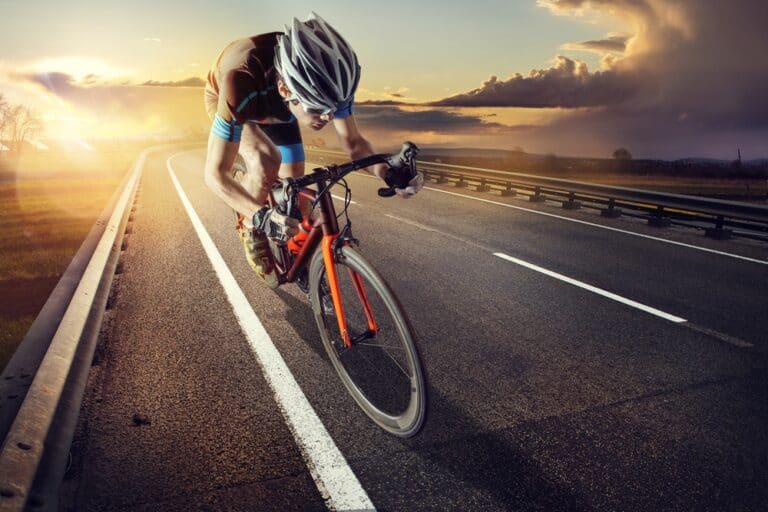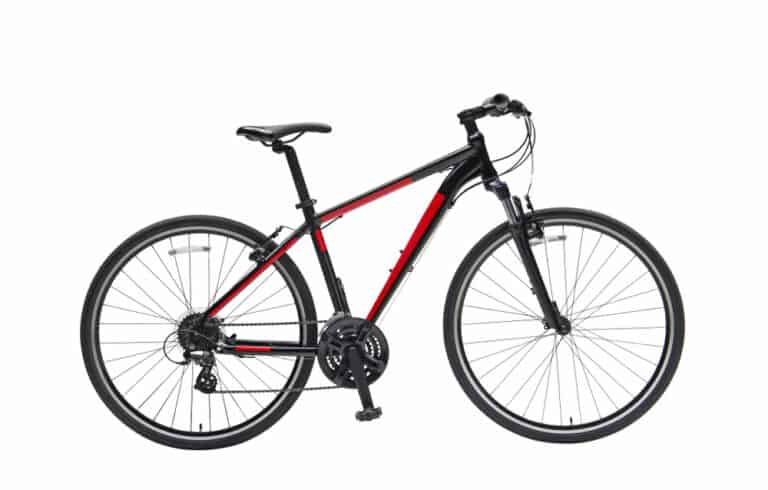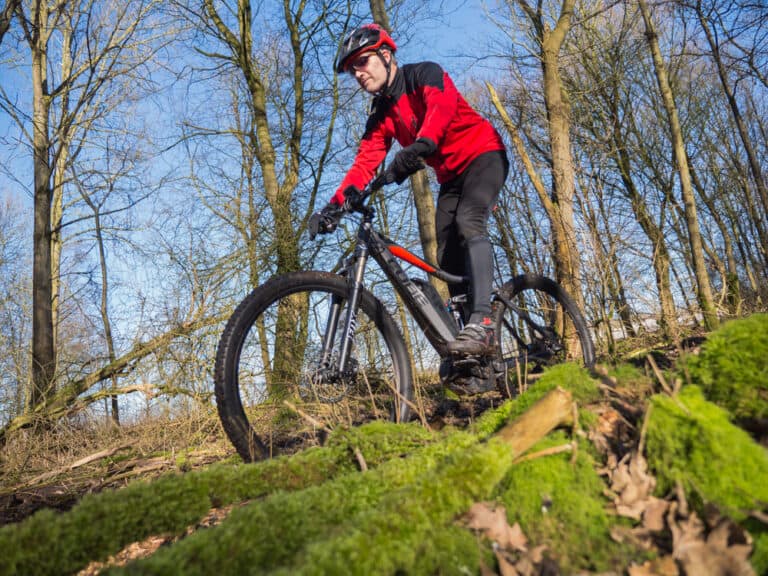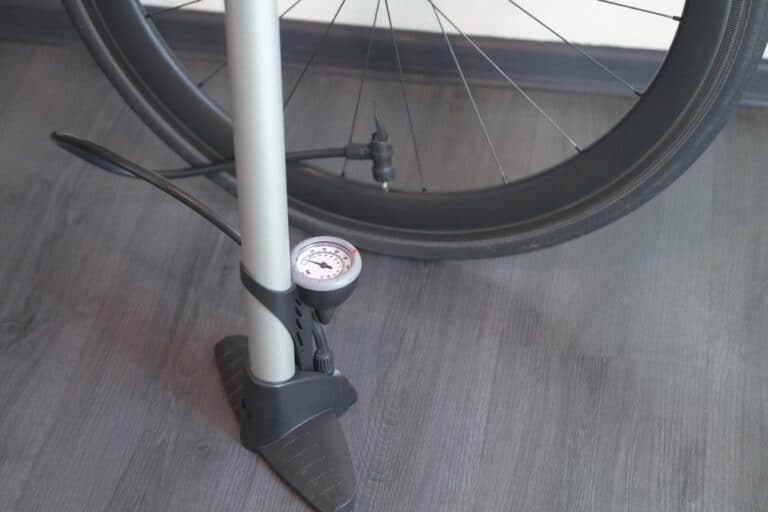Does Riding A Bike Build Muscle?

Super out of shape and keen to turn your flab into muscle? You might be thinking of getting a bike. Some say strength training with resistance bands or weights is better for building muscle. But the fresh outdoors, changing scenery, gliding down a slope, and even battling an uphill make you crave a ride. So, does riding a bike build muscle?
Riding a bike can build and strengthen muscles from all significant muscle groups. Cycling works the muscles from your hip to your ankle and your quadriceps in your thighs. Pedalling a bicycle, drills your glutes and hamstrings. Cycling strengthens your core and shoulder muscles.
Cyclists are known for their sleek body shapes and look of fitness and health. Jumping onto a bike and heading off in super-slick, brightly-colored, tightfitting gear, a matching helmet, eye protection, and even protective gloves grabs attention. Are you curious about what happens to your muscles on a bike? Let’s see.
Can You Gain Muscle Riding A Bike?
Cycling builds muscle and bone and is good for increasing your heart rate. You’ve even heard that cycling is good for your core. Cycling is good as the terrain varies, influencing how we use our muscles and even build these. Different levels, up-and-down hills, and even level cycling use different muscle groups. So what happens when you’re cycling – does riding build muscle?
A quick dissection of muscles and their groupings makes one think about how the body works. Ever wondered how you manage to cycle and balance? Well, it’s your glutes – these strong buttock muscles link to your biking posture. These even determine how flexible you are – what amount of ease and skill you have to maneuver a bike along a path or down a slope.
The large muscle of your buttocks, a pair of glutes, keep you on a bike. Your glutes with your hamstring in your legs and the laterals or lats in your back. As you cycle, you work your lats at an oblique angle from glute to glute. And you don’t fall off a bike.
Glutes keep you on a bike, and so too the muscles from your hips to your shoulders. And then there are those adductors, the muscles in your thighs that strengthen the hips. When you’re standing, the muscles let your legs swing from side to side. You do jumping jacks and bodyweight squats. You need these to cycle.
Your thighs have many muscles, adductors on the inside of your legs, and abductors on the outside. These are also the largest muscles in the body. There are also the quadriceps and hamstrings to help us bend and are between our hips and knees.
Many cyclists will tell you that the quads and hamstring muscles propel you, each powerful peddle stroke that moves you forward. But did you know that your hips and core are involved too? The faster you go depends on the strength of your glutes and abductors, adductors, and back lats.
And if you feel like really pushing yourself, get your balance right, stay stable and see how you corner and race down a slope. Work on those glutes, the abductors and adductors, and those muscles in your back to get faster. Yes, cycling strengthens muscles – from calves to thighs, glutes, and core.
Groups of muscles work in concert, especially when you cycle. These strengthen with use and benefit the overall strength of one’s body.
Key Muscles In Action When You Cycle
Like some hop-skip-and-jump rhyme, the muscles of a cyclist can be hummed: quads, hamstring, glutes, shins, and calves! Each leg stroke hits a pedal, and whether in saddle or out, the muscle body is a machine. There’s the power behind every stroke on the pedal. And stretching and building these muscles is every cyclist’s dream.
If you are a cyclist or even if not, no doubt you’re familiar with the talk about riding a bike to build muscles. A breakfast with cyclists quickly turns to talk about training on a bike, hours of workouts, and getting in shape with biking. You will hear that biking builds muscle. Thighs get as hard as rocks, knee problems vanish, and legs get muscular and toned.
Some are adamant that it is a bike that bulks up legs. The uphill cycling builds muscles, those glutes, quads, and a smaller buttock. So which muscles are involved in cycling? The largest muscles both engaged in the motions of cycling and being built riding a bike are:
- Gluteal Muscles
- Core Muscles
- Hamstring Muscles
- Quadriceps, Calf, And Shin Muscles
- Muscles In Shoulders And Arms
Gluteal Muscles Through Cycling
The glutes are the muscles most cyclists crave. This is the area to buff up. The glutes are also one of the most important muscles in the body, along with adductors, abductors, and lats. The pair of glutes, the gluteus, stands out.
So starting with glutes, let’s see what these are and how cycling builds these muscles:
- Gluteus Maximus
- Gluteus Medius
- Gluteus Minimus
These glutes extend from the hips, and their function is to straighten one’s hips. Glutes let your hips rotate; this is where the power for cycling comes from – your hips are in line with your knees. Glutes are strengthened though keeping up a regime of biking.
Think about it, the more developed your glutes are, the stronger you’ll be able to cycle. This area in the body is easily neglected or gets slack as most of us are used to sedentary work. So too do our leisure habits consist of lazing on a sofa and watching series. Neglecting building the muscle of these glutes affects our posture. But biking strengthens these muscles.
The burst of power to cycle comes from your hips. For a start, the glutes hold your hips in place. With your hips stable, you can cycle even more powerfully. Biking is how to build these, and well-developed glutes make cycling powerful.
Glute max, short for Gluteus Maximus, is the largest of the three and is the power behind every pedal stroke. Cycling builds this glute, the cycling fraternity’s most coveted one! In pedaling, you strengthen this already powerful muscle. Strong glutes, in cycling-speak, fire up muscles most neglected when sitting at a desk all day.
No doubt, cycling builds muscles from your core, hips, and down your legs – strengthening leg muscles and don’t overstress joints either.
Core Muscles Through Cycling
As much as the butt’s glutes are coveted assets, getting your core right is a close second. With a powerful set of glutes in place, the last thing you’d want to do is destabilize or injure your lower back. That is a reason to get that six-pack goal in place – it’s more than aesthetics. The muscles in the body’s mid-section, known as the core, are the base from where the body works.
Often we think of our core and abs (abdominal muscles) in the same breath, but these have different yet complementary functions. Cycling builds core muscles known as rectus abdominis, which hold your spine in place. The six-pack muscle, the rectus abdominis, is a long narrow muscle from your sternum to your rectum.
In fact, our body’s core muscles stabilize our spine. These muscles make us stand upright and let us twist and turn, even bend forwards and backward. You can feel your abdominal muscles tighten when you breathe and lean forward. Your abs allow you to bend forwards. And, when cycling, you use and can strengthen your core and ab muscles.
When a group of cyclists hit a hill, you can see them cycling out of the saddle – a position many take to lean forward and allow their core and abs to do the work. Building your abs through cycling will let these muscles work harder and let you cycle faster. Speak to any cyclist; the workout is challenging but worth the effort.
Cycling out of the saddle is known to work abs. That is as you pedal forcefully standing up. Working your abs in this way builds strength.
Hamstring Muscles Through Cycling
Those hamstring muscles, better known for injuries, are vital in the muscle makeup of cyclists. These muscles run down the back of your legs, from your hips, and behind your knees. The pedaling action of cycling strengthens these muscles that work machine-like, pushing down and pulling up. Building these muscles correspond with each pedal stroke.
Quadricep, Calf, And Shin Muscles Through Cycling
Pushing down on the pedals is forceful and builds powerful muscles. Quadricep muscles, the large, almost fleshy muscle covering the thighs, get built and developed with each downward pedal, along a straight flat and uphill. The visible sign of these are bulging muscles, like the calf one. The tell-tale signs that someone is a cyclist, many say.
Both quad and calf muscles control the force of downward pedaling. The shin muscles are active and draw the foot up after each pedal stroke. And the calf muscle is strongest when you hit the pedal with your toes. The repetitive cycling pattern with many muscles working in concert builds muscles from your toes.
Muscles In Shoulders And Arms in Cycling
Cycling builds leg muscles and those in your core and buttock. The bi- and triceps in your arms and your shoulders muscles are also built. These work with your upper and lower abdominal muscles to let you balance and cycle in an upright position. These muscles are undoubtedly built when you cycle up a hill and ride out of the saddle.
You can also build muscle in the saddle, but the hill training, even those sprints, build muscle when you bike.

Conclusion
Cycling has multiple benefits, and some of the key ones are strengthening our muscles and holding us upright and strong. Cycling builds muscles that often slump as most of our day is spent at a desk. These sedentary jobs and leisure couch and telly habits also impact our posture.
Cycling as a low-impact leisure activity works muscles while we ride, and each ride builds these more. Even corrects our most awkward slumping postures.
References
- https://www.healthline.com/nutrition/best-ways-to-get-abs
- https://www.healthline.com/health/adductor-exercises#what-they-are
- https://www.health.harvard.edu/staying-healthy/the-top-5-benefits-of-cycling
- https://creakyjoints.org/diet-exercise/cycling-and-arthritis/
- https://www.cyclingweekly.com/news/latest-news/benefits-of-cycling-334144
- https://www.healthline.com/health/fitness-exercise/cycling-benefits
- https://www.livescience.com/does-bike-riding-work-your-abs
- https://www.livescience.com/does-bike-riding-build-your-glutes
- https://www.garagegymreviews.com/does-cycling-build-muscle
- https://tanita.eu/blog/muscles-used-in-cycling
- https://www.active.com/cycling/articles/5-hip-strengthening-exercises-for-cyclists
- https://www.reddit.com/r/cycling/comments/jtj7o6/is_a_lot_of_cycling_going_to_give_me_bigger_leg/
- https://www.healthline.com/health/adductor-exercises#what-they-are







